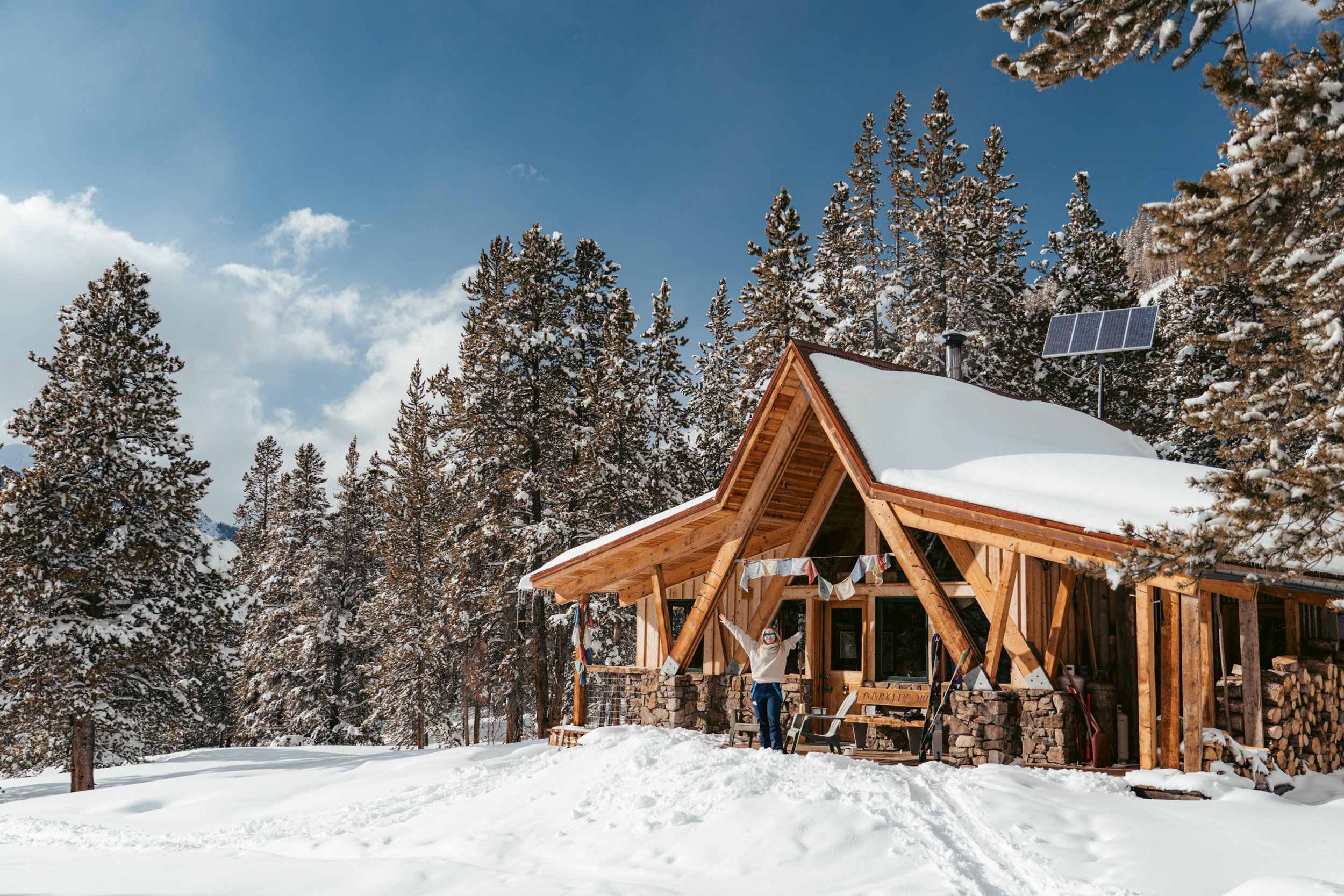
As soon as I learned about ski hut trips, I wanted to go on one. Then I learned how coveted the permits are for the popular hut systems. Often, you need to plan a backcountry hut trip far in advance—even an entire year beforehand—unless you are invited on another group’s trip. So when my friend Taylor put together a trip for our friends, I was beyond excited—but also intimidated.
In this post, I’ll go over everything you need to know to plan a backcountry hut trip from the reservation process, packing list, meal prep and more. Whether you are hosting the adventure, or attending someone else’s trip as a guest for your first time, this information will have you pro-level in no time.
Here’s a 101 on how to plan your first-ever backcountry ski hut trip.
I had been skinning countless times, though never while carrying a 40-pound backpack. I imagined it was like going backpacking but on skis. I was nervous about the sleeping situation. I’m particular about my sleep routine, need quietness, and prefer privacy, so sleeping in a hut without separate bedrooms was beyond my comfort zone. The bunk rooms are often shared with a few others or the entire group. Light sleepers, pack ear plugs!
Here’s out the adventure panned out.

My First Ski Hut Trip
My inaugural ski hut trip was to Markley Hut, which is among the state’s wildly popular 10th Mountain Division Hut Association hut system. The organization owns a dozen huts and maintains the reservations for a total of 30 backcountry shacks speckled throughout the Colorado Rockies, connected by 350 miles of routes in the summer or winter. The name honors the soldiers of the 10th Mountain Division of the U.S. Army. More than 11,000 troops trained during World War II at Camp Hale in central Colorado. Post war, many veterans returned to Colorado and played a key role in the ski industry development.
Magical Markley Hut
Markley Hut is accessed from the historic town of Ashcroft, 13 miles south of Aspen. Our 2.3-mile skin in was a tough push for our 6-person crew. We passed beneath four major avalanche paths, so fortunately the avalanche conditions were stable enough for our trip. One by one, each skiers crossed the avalanche path with at least one bus length between.
Once we caught sight of the hut, the effort was more than worthwhile! Markley was the most magical scene I could dream up: A beautiful, quaint hut nestled in the mountains, packed to the brim with snow, with far-reaching icicles hanging from the eaves.
Inside, I was SHOCKED to see how well maintained the hut was. I was expecting grunge but the interior was cared for meticulously, charming, and well kept. The kitchen was stocked with all of the cutlery, cooking utensils, and cleaning supplies we needed. There were even slippers plus games and books! Despite no electricity or running water, I wasn’t worried, given that’s usually the case while glamping, which I’ve done dozens of times.

Soon after we arrived, I settled in and lounged on the porch in the sunshine for the afternoon while the rest of the group took another ski tour further up the mountain and enjoyed the untracked snow.
Meal Planning & Chores
We divided up the meal responsibilities, just like when we go camping. Teams of two pre-planned, divvied up the goods in their packs, and prepared their assigned dinner and breakfast. Lunch, snacks, appetizers, deserts, and boos were up to each person to bring along—and share! We also designated hut chores to each person. Someone was in charge of boiling the water while others were in charge of sweeping, washing the dishes, collecting the trash, and so forth.

Like many camping and backpacking trips I’ve been on, our group brought too much food. But that was an OK problem to have. We were excited to indulge, lounge by the heat radiating off the stove and ski all weekend.
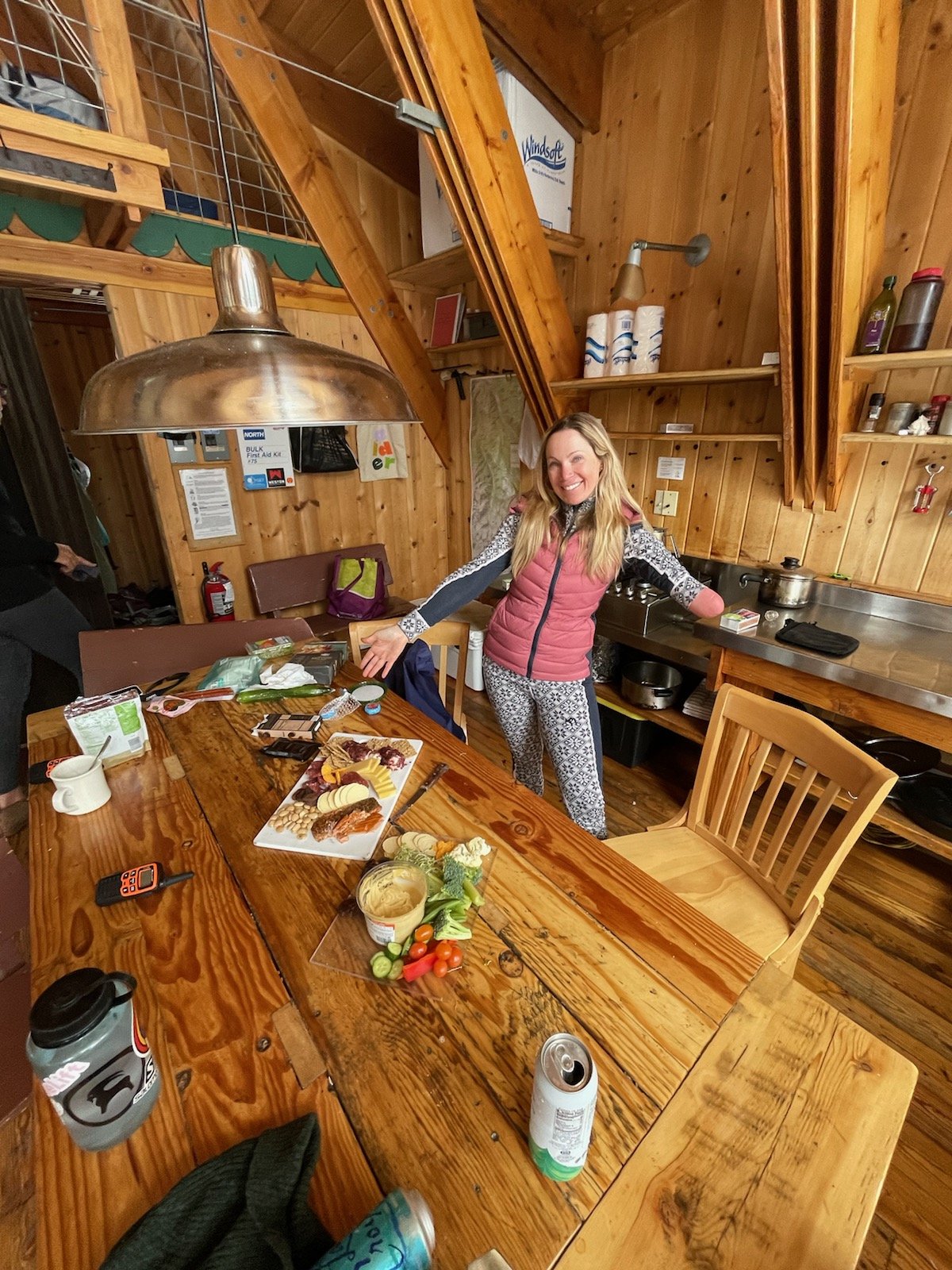
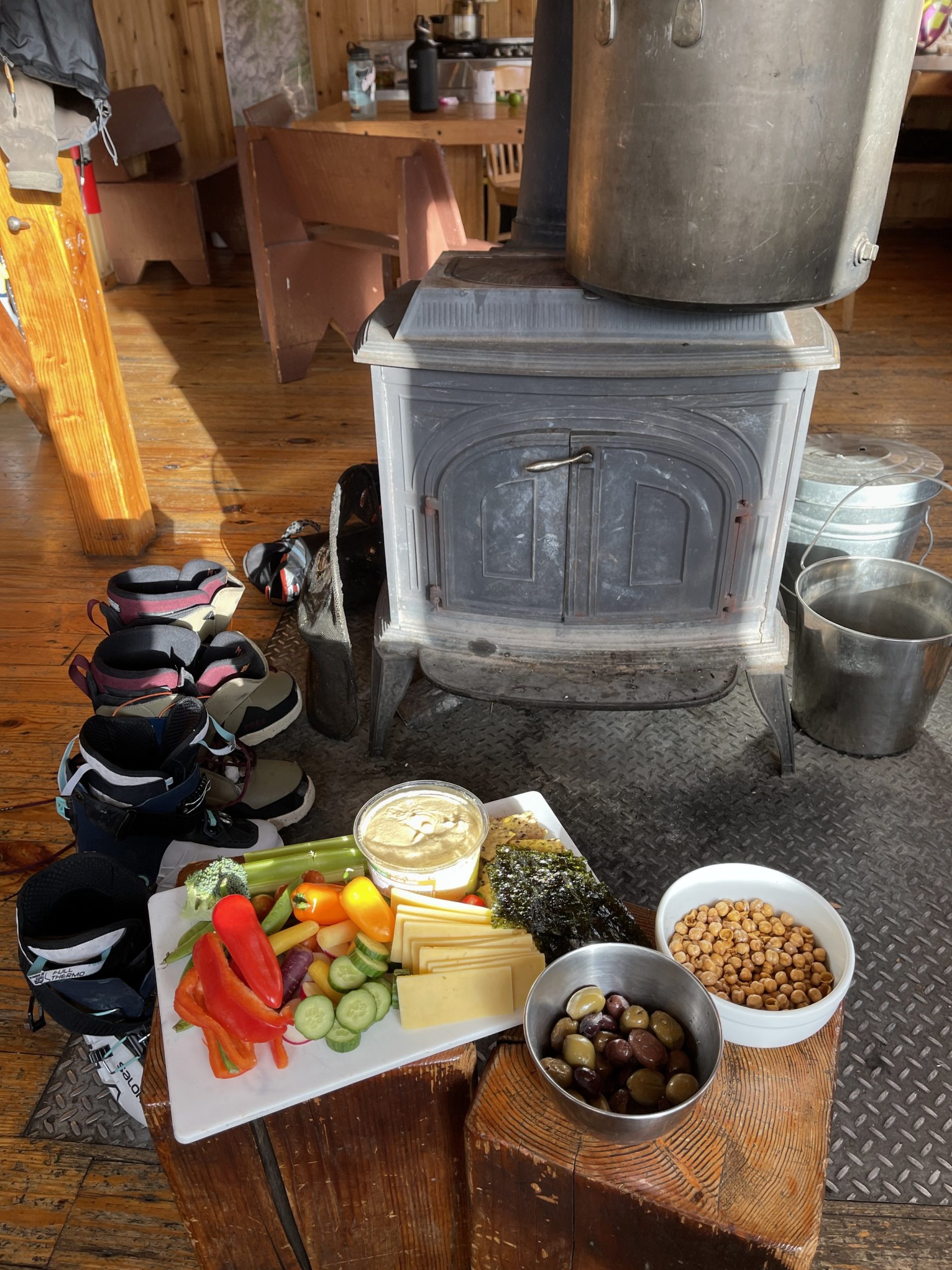
Skiing Around the Hut
After a night’s rest, I was ready to join the group again for a backcountry ski outing. I had never backcountry skied in such a remote area. The experience felt eery, majestic, and our group communication was clear and solid. We saw two guided ski groups but otherwise had the entire region to ourselves.
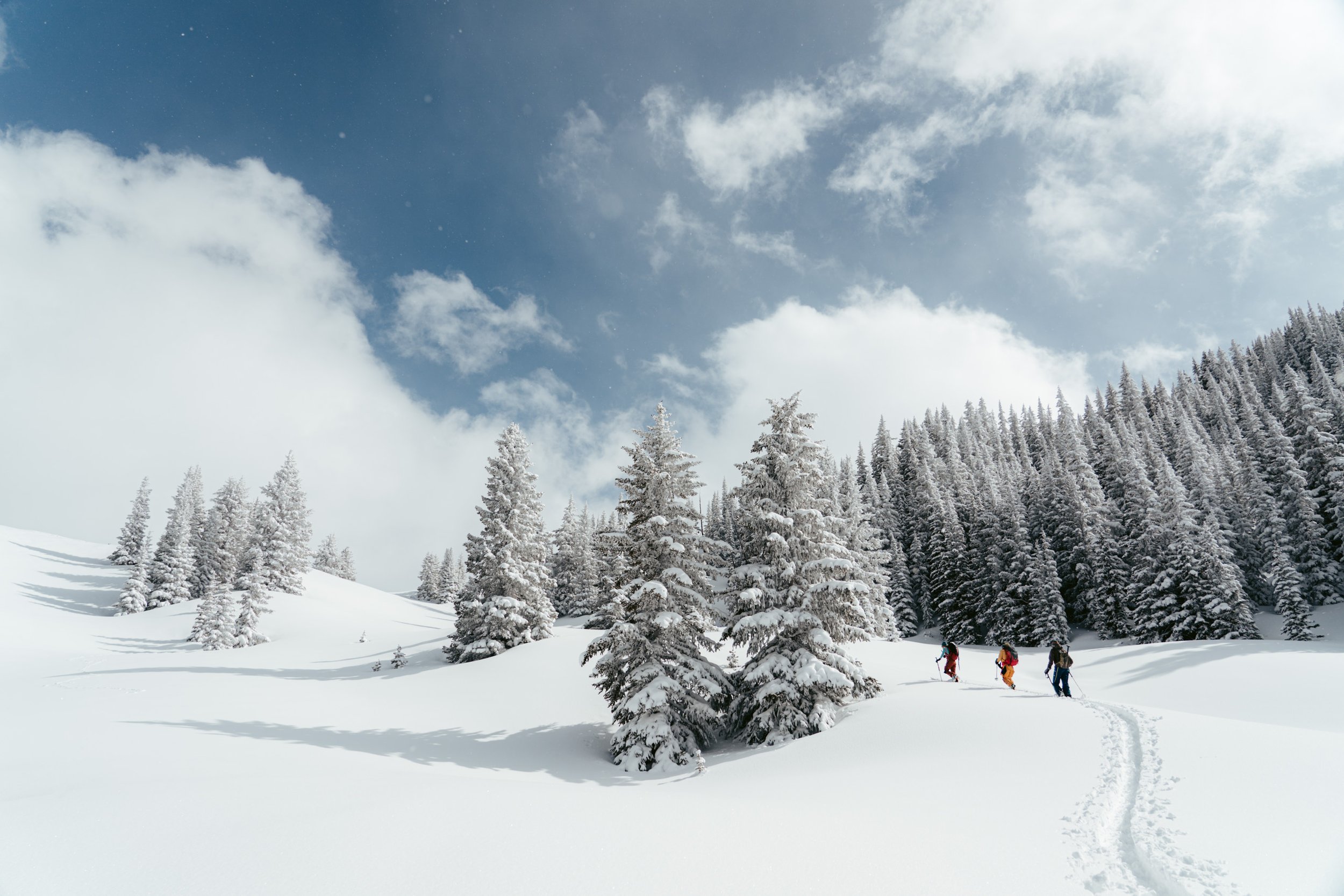
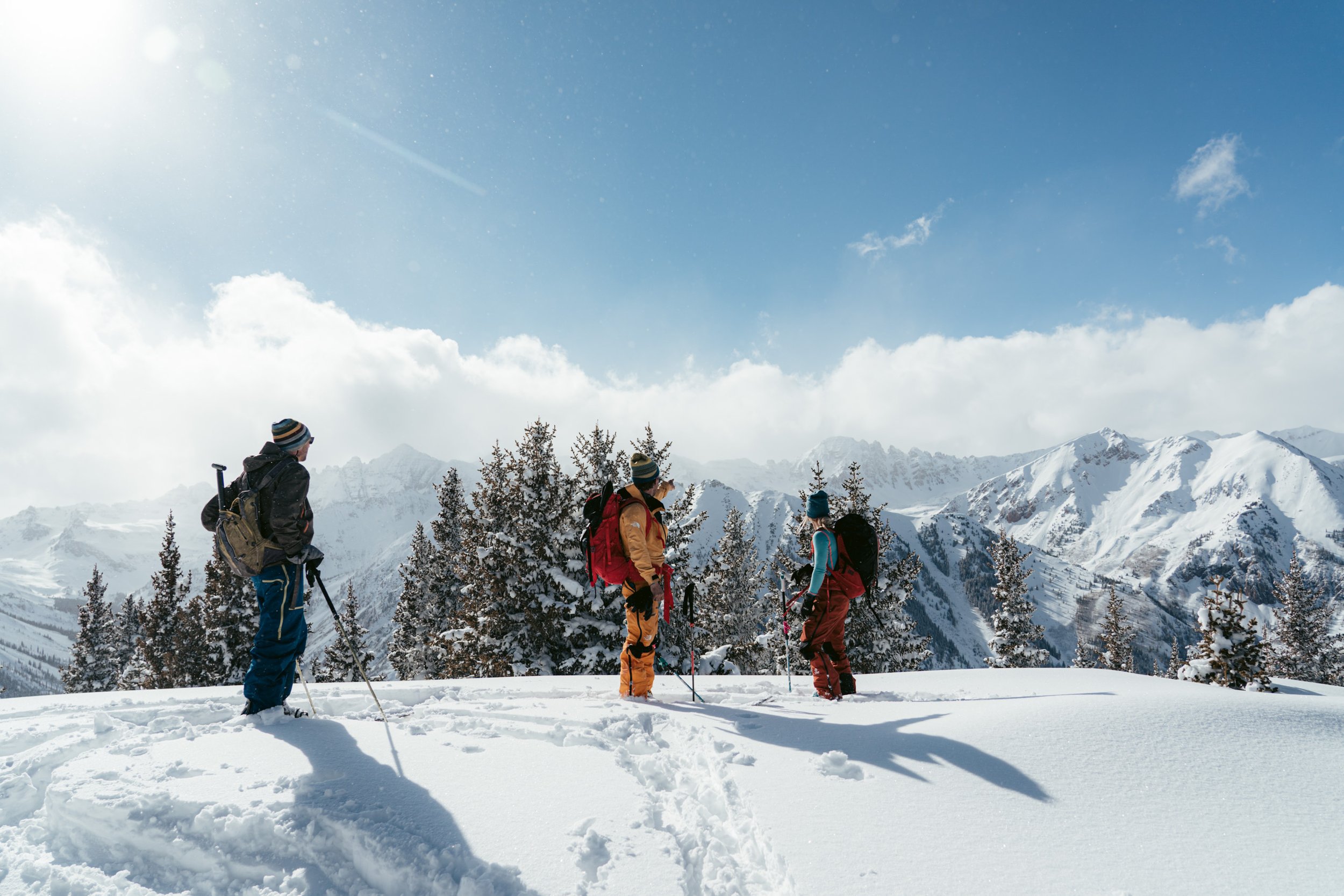
That night, we feasted, played games, and the sleeping situation turned out to be not so bad. (I brought ear plugs!)
Surprisingly, there’s nothing I would do different. I had the best experience on my first ski hut trip. I strongly recommend that visiting groups are well versed in avalanche safety, and trust and feel comfortable with the group of people they go with. I felt very safe with my backcountry ski trip partners.
How to plan a backcountry hut trip: reserving a hut
Still-standing mountain huts have provided shelter to backcountry travelers throughout the United States, all over Europe, and in Canada for decades if not centuries. In our Colorado region, these shacks were established not only for ski mountaineers but also sheep herders and Forest Service guards in the 1940s. These gems of history can still be utilized for outdoor adventure today.
These North American hut systems sit at the top of our trip list:
-
10th Mountain Division Hut Association, Colorado
-
Carter Notch Hut, New Hampshire
-
Mt. Tahoma Hut to Hut Trail System, Washington
-
Ostrander Ski Hut, California
-
Glacier Point Ski Hut, California
-
Peter Grubb Hut, California
-
Never Summer Nordic yurts and cabins, Colorado
-
Golden Alpine Holidays, British Columbia, Canada
-
Sun Valley Mountain Huts, Idaho
-
Teton Backcountry Guides yurts, Wyoming-Idaho border
When you plan a ski hut trip, one person can book an entire hut, which typically means paying for the whole reservation up front, and then reach out to invite friends. Or, individuals can reserve their personal bunk in a hut based on the current availability. The latter can work for smaller groups but means you’ll most likely be sharing the hut with other travelers.
Pro Tip / Things to Consider:
One tip for uniting the group prior to a trip it to designate a trip organizer, if there isn’t already one person taking the lead. One of the most valuable tools we’ve seen is for a trip leader to distribute a survey asking each person’s goals and concerns, and then using that input to create a FAQ document, which ultimately helps the crew prepare. The most common questions we’ve heard prior to a ski hut trip include.
-
“How will we handle the skin up to the hut?” The response can include a designated track on a topo map with slope angle shading for the intended route into the hut.
-
“Does everyone have backcountry or avalanche experience?” Answering this question will help jumpstart the conversation of who has previous knowledge and experience. You can include a chart with the options: None, Awareness, Level 1, Level 2, and Professional.
-
“How will we decide who skis with who?” This topic is more applicable if there is a group of 20 versus four or six skiers. Establish ground rules for the group such as, ‘no one skis alone’ and ‘a single-veto system reigns for all backcountry decisions.’
-
“What if the avalanche conditions are bad?” Colorado has particularly notoriously unstable snowpack. We pretty much always need to talk in advance about an alternative plan B, in order to temper expectations and be OK with not skiing at all—which is fine by me! There’s so much serenity, relaxation, and social time to enjoy at a ski hut even if you can’t tour a bunch once there.
-
“What’s the skiing like around the hut?” Study maps and guidebooks for the area, look at the weather and snow forecast in addition to the avalanche report, and read trip reports to get an idea of the terrain and potential routes that are available from your hut. Create and download tracks for potential routes in your map app in advance. You likely won’t have access to many if any resources, such as WiFi or cell service, once you arrive, especially at remote ski huts.
-
“What do I need to bring?” Each hut has slightly different amenities with some being more luxurious than others. Check out our pack list below to get an idea.
Packing List for a Ski Hut Trip
While this pack list isn’t comprehensive, it’s a great start point for packing for a ski hut trip:
-
Avalanche safety gear: Beacon, shovel, probe
-
Radio
-
Skins
-
Skis or splitboard
-
Ski or snowboard boots
-
Ski or splitboard poles
-
Helmet
-
Goggles
-
Sunglasses
-
Sunscreen
-
BUFF or face mask
-
Beanie
-
Sun hat
-
Headlamp
-
First Aid Kit
-
Lightweight guidebook for the area (such as Beacon Guidebooks)
-
Download the area’s map data into your choice backcountry ski application such as GAIA GPS or onX Backcountry
-
1 set of base layers
-
1 set of outer layers
-
1 midlayer jacket
-
1 down jacket
-
2 pairs of gloves (light and heavy)
-
2 pairs of ski socks
-
2 sports bras
-
Underwear
-
1 loungewear set
-
Ear Plugs
-
Hut shoes (i.e. packable down slippers)
-
Travel toothbrush and toothpaste
-
Reading glasses, contact lenses
-
Meals, snacks, tea packets, libations
Some huts provide bedsheets, pillows, electricity, and saunas while others don’t, so here are some additional items based on where you go:
-
Bathing suit
-
Micro towel
-
Sleeping bag liner
-
Backpacking pillow (like the Sea to Summit Aeros Premium)
-
Phone charger (if there’s no electricity, bring an external battery pack and your charger cable)
Be sure to check if your hut has COVID-19 requirements such as face masks, proof of vaccination and boosters, negative tests, or single group bookings.
Reservation Process
Each ski hut has its own reservation system, especially huts that are well maintained with amenities. On the other hand, lesser-known, more primitive huts might not have a reservation system at all. As a general rule of thumb, plan to make a reservation 3 to 6 months or more in advance for popular huts. That way, you can be sure to secure the hut you’d like to travel to and with enough bunks or the entire hut for your group.
The most high-demand hut systems even offer a reservations lottery like the 10th Mountain Division Hut Association. Lottery submissions are due by February 15th, and the lottery is pulled on March 1st. Then, another waive of members can book trips on the first business day of April, followed by non-member bookings on the first business day of June. The most sought dates for booking a hut are on weekends from mid-January through mid-March, so submitting dates outside of that window or a weekday itinerary can greatly increase your chance of landing the hut you want!
Good luck, and I hope you learned how to successfully plan a backcountry hut trip!
This post was co-written by Morgan Tilton, adventure journalist
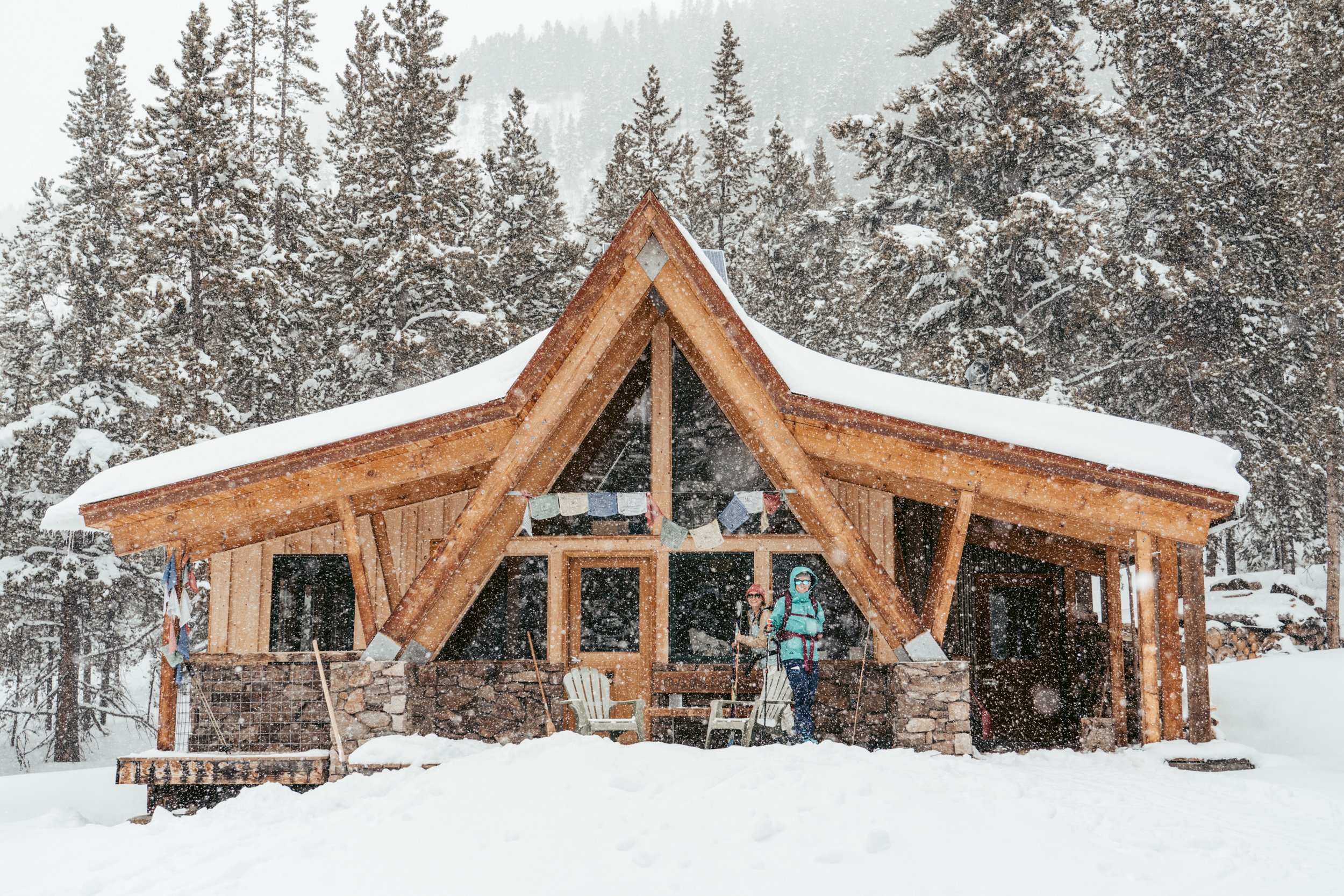
Comments +